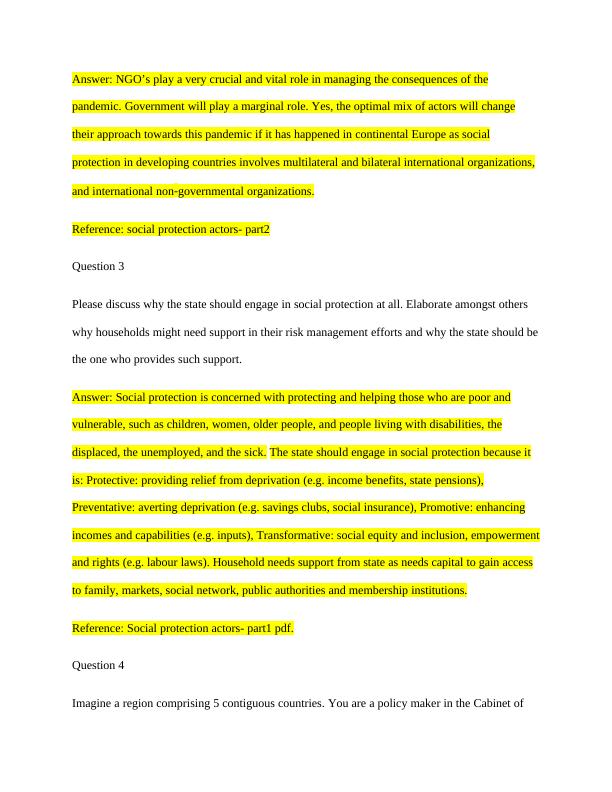Ask a question from expert
Social Protection in Continental Europe and Latin America
4 Pages858 Words302 Views
Added on 2019-09-16
Social Protection in Continental Europe and Latin America
Added on 2019-09-16
BookmarkShareRelated Documents
Question 1 Please compare the strengths and weaknesses of contributory, risk-focused schemes of social protection prevalent in Continental Europe and Latin America with the strengths and weaknessesof non-contributory, needs-oriented schemes of social protection prevalent mainly in the AngloSaxonian world.Answer: Some strengths of contributory, risk-focused schemes of social protection prevalent in Continental Europe and Latin America is the social funding provided to them by ‘cajas de provision’ that provided protection from life course and work related contingencies. It however led to crisis and contributed to extensive liberalization of trade and factor markets. While the non-contributory, needs-oriented schemes of social protection prevalent mainly in the AngloSaxonian are funded by the taxes and state revenues and only provide facility to those in need. Weakness is it puts financial burden to poor families and people living in poverty and cannot get access to this policy.Reference: Social protection pdf.Question 2 The HIV and AIDS pandemic had a huge socio-economic impact in many countries in Sub-Saharan Africa. Please argue which social protection actors are in theory available, which actors the individual / household can best rely on when it comes to managing the consequences of the pandemic and which actors you expect to only play a marginal role. Would you expect the optimal mix of actors to change if the HIV and AIDS pandemic had happened in continental Europe? Please justify your opinion.

Answer: NGO’s play a very crucial and vital role in managing the consequences of the pandemic. Government will play a marginal role. Yes, the optimal mix of actors will change their approach towards this pandemic if it has happened in continental Europe as social protection in developing countries involves multilateral and bilateral international organizations, and international non‐governmental organizations. Reference: social protection actors- part2Question 3 Please discuss why the state should engage in social protection at all. Elaborate amongst others why households might need support in their risk management efforts and why the state should bethe one who provides such support.Answer: Social protection is concerned with protecting and helping those who are poor and vulnerable, such as children, women, older people, and people living with disabilities, the displaced, the unemployed, and the sick.The state should engage in social protection because it is: Protective: providing relief from deprivation (e.g. income benefits, state pensions), Preventative: averting deprivation (e.g. savings clubs, social insurance), Promotive: enhancing incomes and capabilities (e.g. inputs), Transformative: social equity and inclusion, empowermentand rights (e.g. labour laws). Household needs support from state as needs capital to gain access to family, markets, social network, public authorities and membership institutions.Reference: Social protection actors- part1 pdf.Question 4 Imagine a region comprising 5 contiguous countries. You are a policy maker in the Cabinet of

End of preview
Want to access all the pages? Upload your documents or become a member.